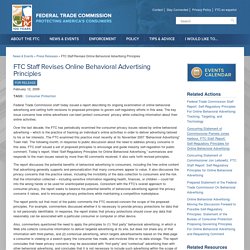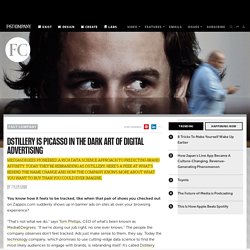

Janet Vertesi talking about being pregnant and blocking info. Online privacy company. What are the most common targeting methods in display advertising? Ad Targeting 101: Eight Types of Targeting. By PETER MARSH, ATEX SENIOR VP SALES & MARKETINGPosted on September 11 17:03, 2013 Let’s face it – online ads are not like magazine ads.

The ads appearing in glossy magazines are visually attractive; they often enrich the reading experience; and sometimes they even smell nice. As a general rule, people do not enjoy seeing ads on the websites they visit. Online ads are perceived as annoying, obtrusive, and sometimes even creepy. Nevertheless, study after study shows that if people must see ads on the websites they visit, then targeted ads are preferred over untargeted ads. When an online ad is served up on a website, and that ad matches the visitor’s interests, it’s called “targeting.” There are many flavors of targeting in the online world. 1. When you see an ad for a sporting goods store or an online ticket broker appearing on a sports news page, that’s contextual targeting. Duck_duck_go. FTC Staff Revises Online Behavioral Advertising Principles.
Federal Trade Commission staff today issued a report describing its ongoing examination of online behavioral advertising and setting forth revisions to proposed principles to govern self-regulatory efforts in this area.

The key issue concerns how online advertisers can best protect consumers’ privacy while collecting information about their online activities. Over the last decade, the FTC has periodically examined the consumer privacy issues raised by online behavioral advertising – which is the practice of tracking an individual’s online activities in order to deliver advertising tailored to his or her interests. The FTC examined this practice most recently at its November 2007 “Behavioral Advertising” Town Hall. The following month, in response to public discussion about the need to address privacy concerns in this area, FTC staff issued a set of proposed principles to encourage and guide industry self-regulation for public comment.
How Retailers Track Shoppers In Heat Maps. Dstillery Is Picasso In The Dark Art Of Digital Advertising. You know how it feels to be tracked, like when that pair of shoes you checked out on Zappos.com suddenly shows up in banner ads on sites all over your browsing experience?

"That's not what we do," says Tom Phillips, CEO of what's been known as Media6Degrees. "If we're doing our job right, no one ever knows. " The people the company observes don't feel tracked. Ads just make sense to them, they say. Today the technology company, which promises to use cutting-edge data science to find the most likely audiences to engage with brands, is rebranding itself.
Dstillery starts by assembling a very specific picture of audiences for brands based on people's browsing behavior, plus device information, plus key elements in your location data. Phillips says that instead of mostly using a bit of code on a person's device or browser, Dstillery is now able to use the person's IP address. Dstilled - Good Science - Ranked Retargeting. The Internet Isn't Free. Newsflash: The internet isn’t free.

Recently, a company called AdTrap announced that they have devised a method of blocking nearly all advertisements online. From Google (including YouTube) to news sites, text and display advertising is eliminated. Your “privacy is protected” and you “can’t be profiled by advertisers”. Customers see benefits in targeted ads. New digital sales channels are providing companies with innovative ways to reach their audience.

Mobile devices, social media and web content allow firms to enhance customer experiences by delivering relevant information directly to the consumer. A new poll by Digital Advertising Alliance (DAA) found that most people appreciate having their online experiences personalized to them. Seventy percent of respondents stated they liked ads tailored to their interests, which shows companies the importance of understanding the target audience. Just 16 percent of those surveyed said they preferred generic ads. The ExactTarget Blog The Pros and Cons of Social Media Ad Targeting. Over the years, you may have used magazine subscription demographics or Nielsen ratings to determine when and where to spend your advertising dollar.

Despite enhancements in these techniques, however, they have remained a rather imperfect science. Social media ads, however, provide a powerful means for your brand to reach the right people at the right time. Still, it's important to balance the perks of granular targeting through social media with the potential downfalls of zeroing in on specific demographics and groupings. Here are some pros and cons of social media ad targeting that your brand should consider before starting campaigns. The Pros Targeting options: Perhaps the biggest plus in terms of targeting is the sheer number of options your brand has for drilling down to certain demographics and interest groups. Age Location Language Gender Education Interest Friends Friends of friends Relationship status Actions taken Occupation Job title Download Now.